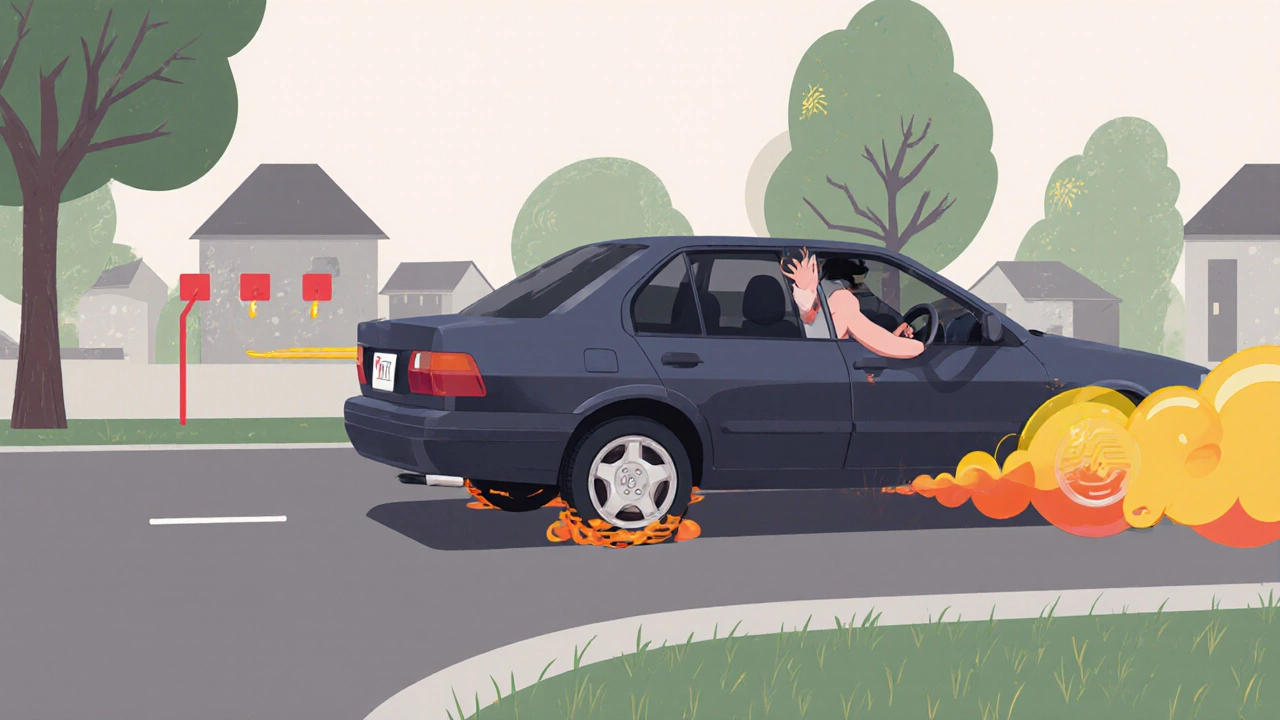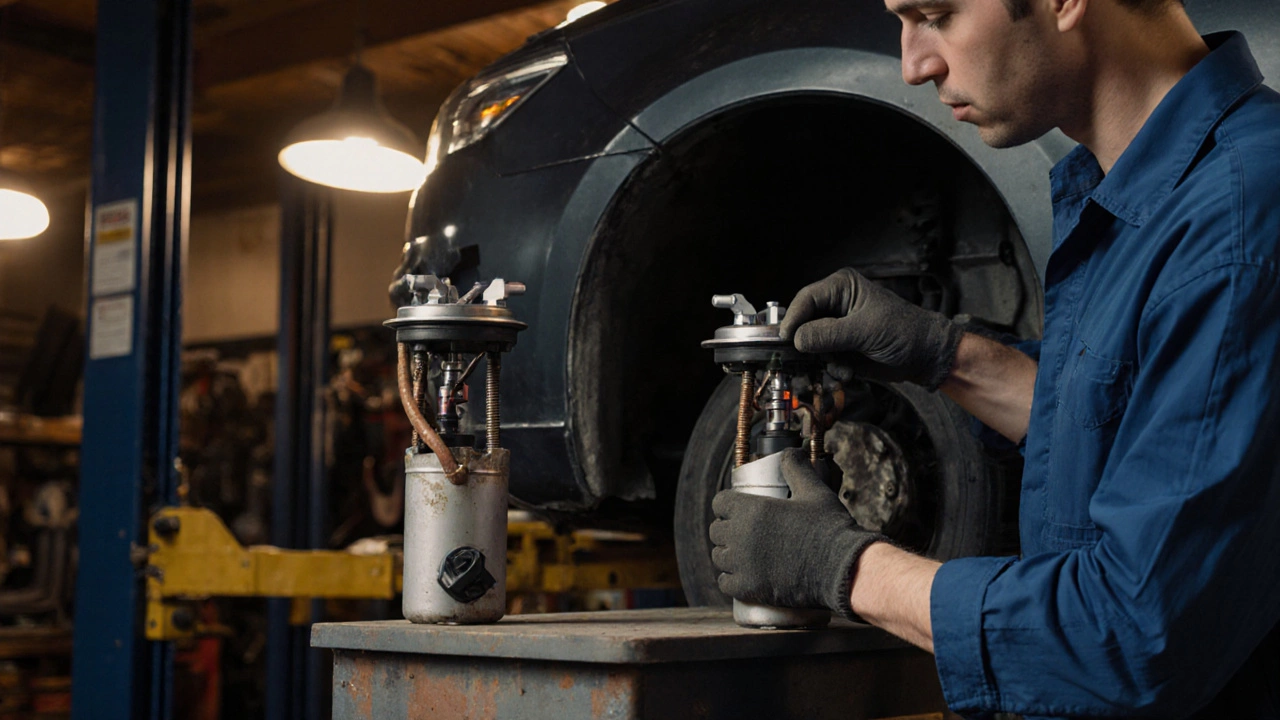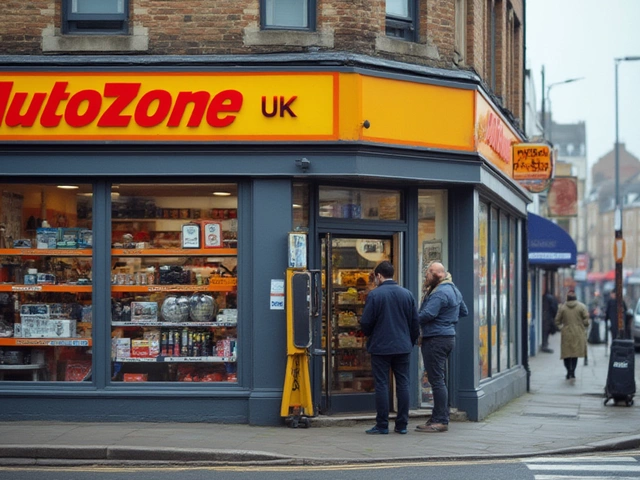Fuel Pump Failure Symptom Checker
Check Your Symptoms
Select all symptoms you're experiencing to determine the most likely cause:
Fuel Pump is a mechanical device that moves gasoline from the fuel tank to the engine at a precise pressure. When the fuel pump goes bad, the whole powertrain feels the impact.
How the fuel pump keeps the engine alive
Inside most modern cars the pump sits inside the fuel tank, powered by an electric motor. It creates a pressure of 30-60 psi (pounds per square inch) so that each Fuel Injector can spray a fine mist into the combustion chamber. The Engine Control Unit (ECU) constantly monitors that pressure through a sensor and adjusts the injector timing accordingly.
Tell‑tale signs a fuel pump is on its way out
- Engine sputters or stalls when you lift your foot off the accelerator.
- Hard start‑ups, especially after the car has been sitting for a few hours.
- Loss of power while driving uphill or when the load increases.
- Whining noise from the rear of the vehicle - the pump’s motor struggling.
- Fuel odor near the rear axle, indicating a leak or internal seal failure.
These symptoms often get confused with a clogged Fuel Filter or a misfiring Spark Plug, but the pattern is usually distinct. A failing pump will affect pressure, while a filter mainly reduces flow.
How a bad fuel pump messes with other components
When pressure drops, the ECU tells the injectors to open longer, which can over‑fuel the mixture. That extra fuel can foul the Catalytic Converter, cause higher emissions, and eventually lead to a costly replacement. Low pressure also makes the Oxygen Sensor send erroneous readings, confusing the ECU’s fuel‑trim calculations.

Step‑by‑step diagnosis
- Check the fuel gauge. If it reads full but the engine still cranks weakly, suspect pressure loss.
- Listen for the pump’s whine when you turn the key to “ON” (engine off). No sound? The pump may be dead.
- Use a handheld fuel pressure gauge at the test port (often on the rail). A healthy system reads 40-50 psi for gasoline engines.
- Scan the ECU for fault codes. Codes P0230-P0233 point directly to fuel‑pump or pressure‑regulator issues.
- Inspect electrical connections to the pump’s relay and wiring harness for corrosion or looseness.
If the pressure is low and the pump makes no noise, replacement is likely needed. If pressure is fine but you still have power loss, look at the Fuel Pressure Regulator or injectors.
Why you shouldn’t ignore the problem
Driving with a weak pump can leave you stranded on a quiet road - the engine will simply quit when the tank’s residual pressure runs out. Moreover, intermittent stalling puts extra stress on the starter motor and can overheat the ECU. In extreme cases, an uncontrolled fuel surge may cause engine knock, which harms pistons and valves.
Repair or replace? Your options
Most mechanics recommend swapping the whole pump assembly because it’s cheaper than sourcing a repaired unit. Prices in 2025 range from £150 for a basic aftermarket pump to £350 for a high‑flow OEM part. If you’re comfortable with a jack and a fuel‑safe environment, the DIY route involves:
- Relieving tank pressure (use the Schrader valve).
- Disconnecting the fuel lines and electrical plug.
- Removing the pump mounting ring and pulling the unit out.
- Installing the new pump, re‑pressurizing, and testing.
Professional shops will also replace the Fuel Filter at the same time, which is a good preventative measure.

Keeping the pump happy for the long haul
- Buy fuel from reputable stations - water or dirt in cheap fuel accelerates pump wear.
- Replace the fuel filter every 20,000 miles or per manufacturer’s schedule.
- Avoid running the tank below a quarter full; the pump can overheat when sucking air.
- Consider a fuel‑additive that cleans deposits every 3,000 miles.
Quick comparison of common power‑loss culprits
| Symptom | Fuel Pump Failure | Fuel Filter Blockage | Ignition Fault (Spark Plug) |
|---|---|---|---|
| Engine stalls at idle | ✓ Pressure drops suddenly | ✗ Usually steady pressure | ✗ Misfire pattern |
| Hard start after sitting | ✓ Low residual pressure | ✓ Reduced flow can cause | ✗ Can also cause but often with knock |
| Whining noise from rear | ✓ Pump motor struggling | ✗ No motor sound | ✗ No noise |
| Fuel smell near rear | ✓ Possible seal leak | ✗ Rare | ✗ No fuel leak |
Frequently Asked Questions
Can a bad fuel pump cause my car to lose power only when I accelerate?
Yes. When you demand more fuel, the pump must increase pressure quickly. A weakened pump can’t keep up, so the engine briefly starves and you feel a dip.
How long does a typical fuel pump last?
Most manufacturers rate the pump for 100,000-150,000 miles, but poor fuel quality or running the tank low can cut that in half.
Is it safe to drive a few miles with a whining pump?
It’s risky. The whining means the motor is over‑working; failure can happen suddenly, leaving you stranded.
Do diesel cars have the same pump problems?
Diesel engines use a high‑pressure pump that’s even more critical. Symptoms look similar, but the repair cost is usually higher.
Can I clean a failing pump instead of replacing it?
Cleaning helps only if the issue is debris clogging the impeller. Electrical or seal failures need a new unit.






